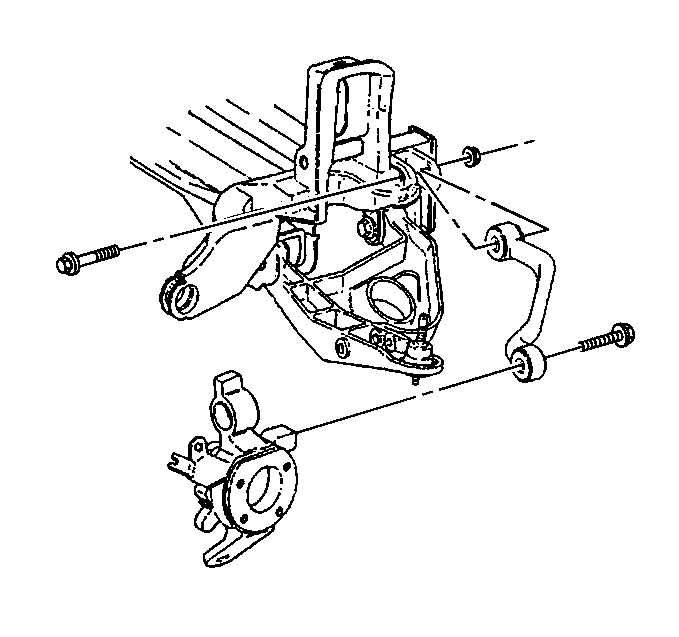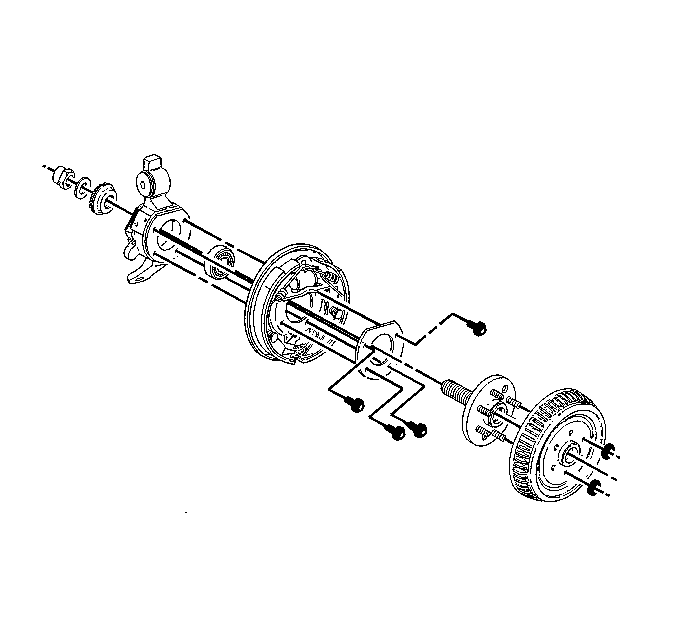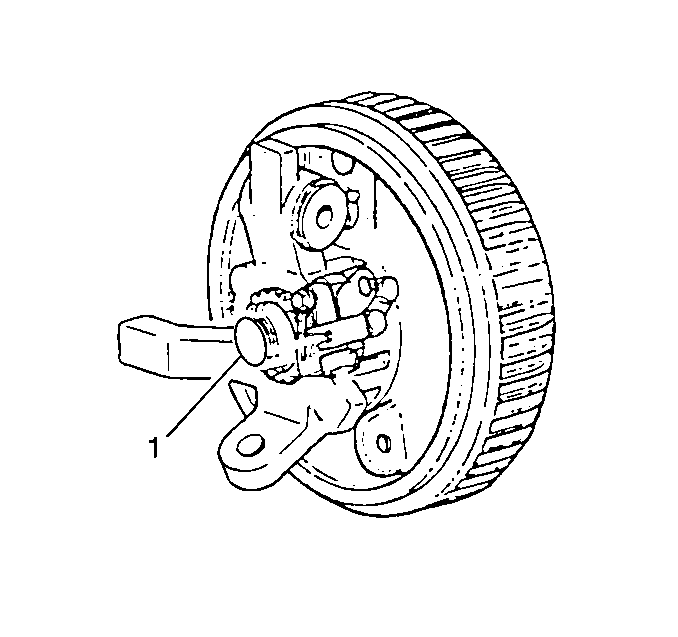Rear Wheel Bearing and Hub Replacement Without B9Q/V4U
Removal Procedure
- Raise and support the vehicle. Refer to Lifting and Jacking the Vehicle in General Information.
- Remove the tire and wheel assembly. Refer to Wheel Removal in Tires and Wheels.
- Remove the caliper. Suspend the caliper. Refer to Brake Caliper Replacement in Disc Brakes.
- Remove the rotor. Refer to Brake Rotor Replacement in Disc Brakes.
- Remove the hub and bearing assembly.
Installation Procedure
- Install the hub and bearing assembly.
- Install the rotor. Refer to Brake Rotor Replacement in Disc Brakes.
- Install the caliper and new caliper bracket mounting bolts. Refer to Brake Caliper Replacement in Disc Brakes.
- Install the tire and wheel assembly. Refer to Wheel Installation .
- Lower the vehicle.
Tighten
Tighten the hub mounting bolts to 70 N·m (52 lb ft).
Notice: Use the correct fastener in the correct location. Replacement fasteners must be the correct part number for that application. Fasteners requiring replacement or fasteners requiring the use of thread locking compound or sealant are identified in the service procedure. Do not use paints, lubricants, or corrosion inhibitors on fasteners or fastener joint surfaces unless specified. These coatings affect fastener torque and joint clamping force and may damage the fastener. Use the correct tightening sequence and specifications when installing fasteners in order to avoid damage to parts and systems.
Tighten
| • | Tighten the caliper bracket mounting bolts to 113 N·m (83 lb ft). |
| • | Tighten the parking brake cable bracket bolt to 43 N·m (32 lb ft). |
Rear Wheel Bearing and Hub Replacement With B9Q/V4U
Removal Procedure
- Raise the vehicle. Refer to Lifting and Jacking the Vehicle in General Information.
- Remove the wheel and tire.
- Remove the brake drum. Refer to Brake Drum Replacement in Drum Brakes.
- Remove the brake shoes and brake cable.
- Remove the brake line and wheel speed sensor.
- Support the lower control arm with jack stand.
- Remove the ball stud nut and separate the ball stud from knuckle.
- Remove the upper knuckle nut and bolt.
- Remove four bolts and the bearing retainer.
- Remove the nut from the backside of the knuckle securing the hub to knuckle.
- Press the hub from the knuckle.
- Remove the brake backing plate from the knuckle.
- Press the bearing from the knuckle.
- Remove the hub and bearing.



Removal Procedure
- Press the bearing into the knuckle.
- Install the backing plate and bearing retainer bolts.
- Press the hub in the bearing.
- Install the speed sensor reluctor ring and nut.
- Install the upper knuckle bolt and nut.
- Install the ball joint to the knuckle.
- Install the brake line and wheel speed sensor.
- Install the brake shoes and parking cable.
- Install the brake drum. Refer to Brake Drum Replacement in Drum Brakes.
- Bleed the brake system.
- Install the wheel and tire.
- Lower the vehicle.

Notice: Use the correct fastener in the correct location. Replacement fasteners must be the correct part number for that application. Fasteners requiring replacement or fasteners requiring the use of thread locking compound or sealant are identified in the service procedure. Do not use paints, lubricants, or corrosion inhibitors on fasteners or fastener joint surfaces unless specified. These coatings affect fastener torque and joint clamping force and may damage the fastener. Use the correct tightening sequence and specifications when installing fasteners in order to avoid damage to parts and systems.
Tighten
Tighten the retainer bolts to 50 N·m (37 lb ft).

Tighten
Tighten the nut to 200 N·m (145 lb ft).

Tighten
Tighten the upper knuckle bolt and nut to 108 N·m (80 lb ft).
Tighten
Tighten the Wheel Nuts to 190 N·m (140 lb ft).
